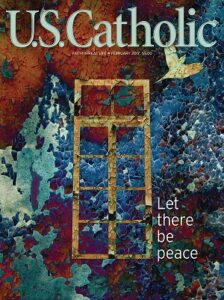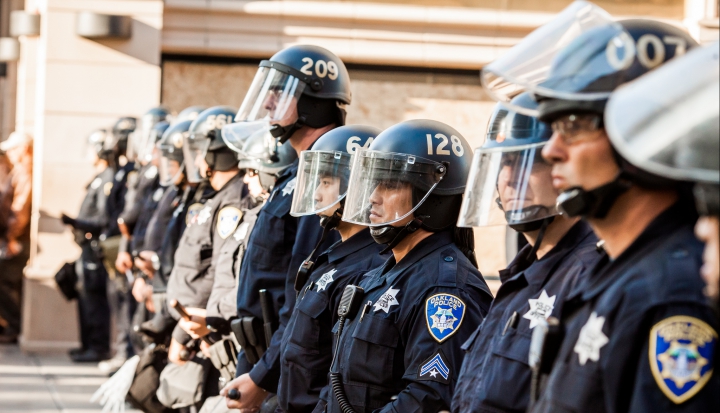U.S. Catholic
February 2017
 Gerald Schlabach first started thinking about peace and violence in the mid-1980s. He and his wife worked for the Mennonite Central Committee in Nicaragua during a time of ongoing civil revolution. A member of the Mennonite church at the time, he was tasked with figuring out how the historically pacifist church should respond to the violence.
Gerald Schlabach first started thinking about peace and violence in the mid-1980s. He and his wife worked for the Mennonite Central Committee in Nicaragua during a time of ongoing civil revolution. A member of the Mennonite church at the time, he was tasked with figuring out how the historically pacifist church should respond to the violence.
“This was a situation where a lot of Christians had said, ‘Our backs are against the wall. We need to resist the tyranny of the Somoza dictatorship (known for their brutality and human rights violations) through violent revolution,’ ” he explains. “And here I am, 27 years old and tasked with speaking up for nonviolence.”
The experience convinced Schlabach that nonviolence is always a worthwhile goal, even if violence seems neverending. There are always people willing to respond with violence but never enough peacemakers.
When asked if war is ever justified, Schlabach says, “I hate that question. If you start asking if there’s ever any exceptional cases where violence is justified, then the exception starts to become the rule. We have to do less work on justifying the violence and more work on making sure we have the skills to make active nonviolence our first, second, and 15th resort.”
In 2004 Schlabach joined the Catholic Church and became, as he describes it, a “Mennonite Catholic.” Part of bridging these two identities for an ethicist meant promoting dialogue between the faiths’ visions of peace and justice. The Roman Catholic tradition holds the idea of a “just war”—the belief that under some circumstances violence is justified. On the other hand, Mennonites are among a group of “historic peace churches” that believe violence is immoral, no matter the situation. Their ideas may seem opposed, but Schlabach hopes they will find some common ground in their shared practices.
To read entire interview (with a different title online) click here.
